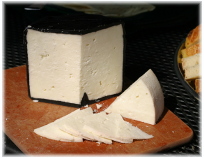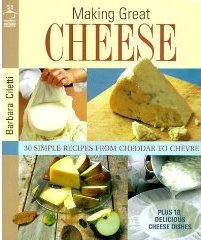
I first became obsessed with cheesemaking when my wife surprised me with a cheesemaking class at Kookoolan Farms in April of 2009 (that is me in the black aloha shirt in the background of some of the pictures taken by Jill Waterbury on that page). We watched as Mary Rosenblum went through the first steps of her gouda recipe in class (we did not finish pressing or brine the cheese in class).
A few weeks ago I opened my first gouda, which was my third cheese, after 3 months of aging. Since I was gathering footage for my entry in the Travel Oregon "Oregon's Bounty" competition, I has my brother-in-law film the opening for potential footage in my entry. The editing process was cruel, and a lot footage could not be squeezed into the 2 minutes allowed, including this footage. However, it makes a perfect subject for a post, so here is the video:
I was disappointed with the cheese. It turned out sour, to my taste, and not really enjoyable. It had the aroma of sour milk. My family kept saying it was good, but I have to disagree. I think they may have just been being polite.
The gouda was made with Organic Family homogenized, pasteurized milk bought from Fred Meyers. Mary Rosenblum did say that it was probably worth making your first few batches with less expensive store bought homogenized milk, so you get your cheesemaking skills sharpened before buying expensive raw milk for your hobby. In retrospect, I think it is worth jumping into raw milk as early as you feel comfortable with it. You spend so many hours in the cheesemaking process, you might as well invest the money to buy good milk so you have something you are proud of when you are done.
In the second half of the video, I open my first Camembert, made with raw milk purchased from a farm in Redland, Oregon. This cheese turned out much better, except that it was way too salty. I attribute this to the fact I used pickling salt instead of cheese salt to salt the camenbert. The recipe I used called for rolling the fresh wheels of camenbert in a plate of salt. I think that if I had used cheese salt, or kosher salt much less salt would have ended up sticking on the cheese. The cheese has a wonderful camembert/brie flavor, but the salt is overpowering. I consider it a mild success, and a lesson learned for next time.



